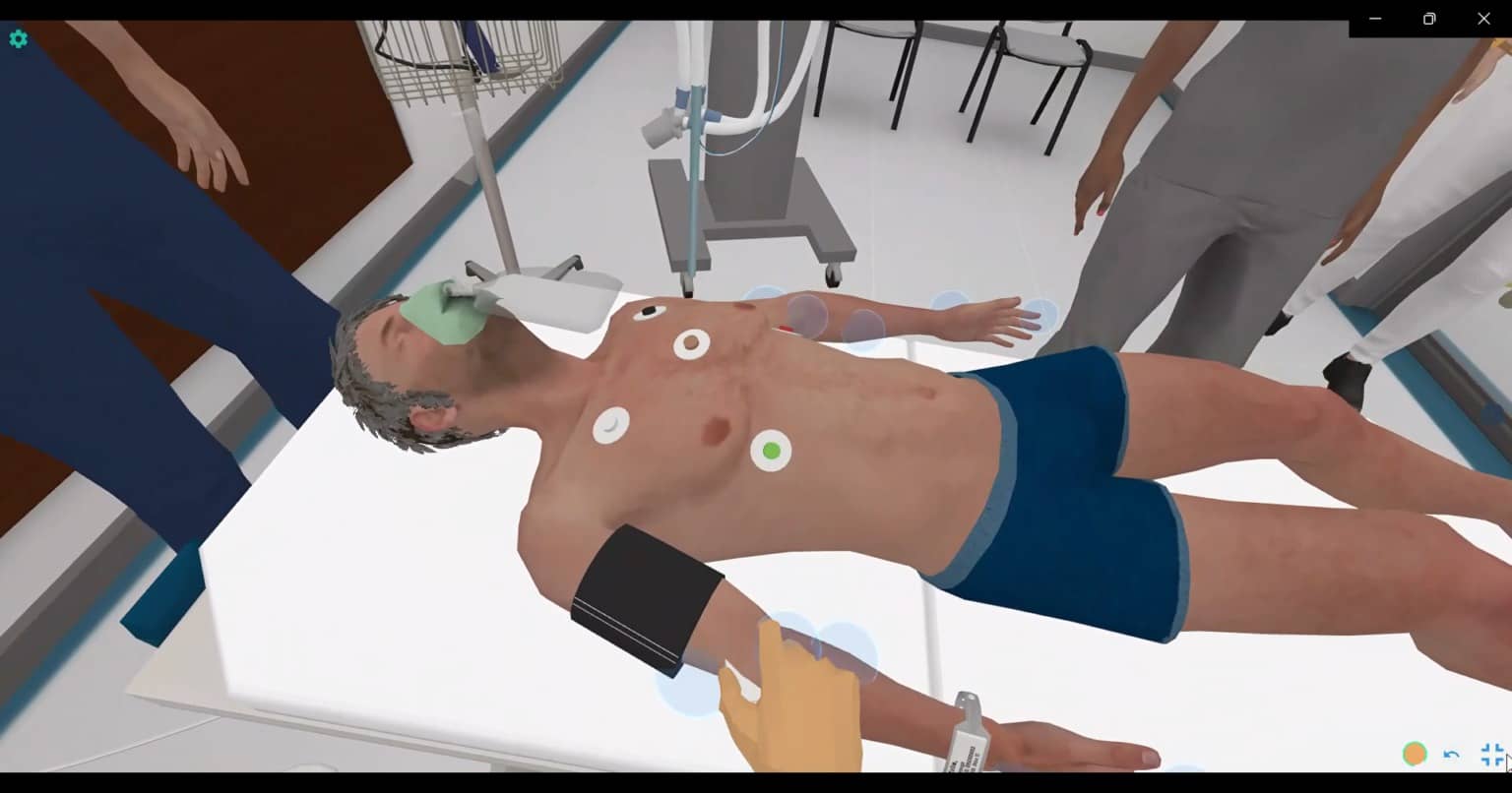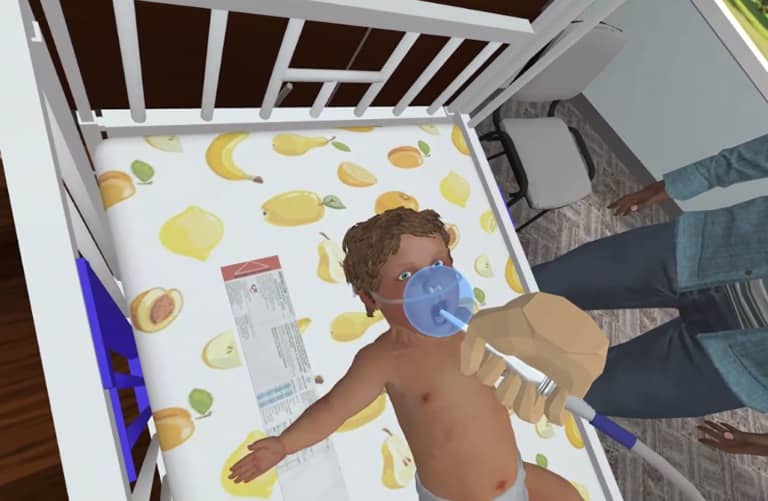SimX is completely changing the way healthcare providers undergo simulation training. For decades, patient manikins have evolved to incorporate varying...
BLS vs. ACLS vs. PALS

BLS vs. ACLS vs. PALS
Emergency life support training and certification is essential for healthcare providers, medical paraprofessionals, and first responders. There are three certifications based on guidelines set forth by the American Heart Association (AHA): BLS, ACLS, and PALS.
These courses teach critical skills needed to save a life during a cardiac event. While there is some overlap between the content of these courses, they each teach a different set of skills. Certification in one or more types of emergency life support is typically required for healthcare professionals, first responders, and trainees in these fields.
What is BLS?
BLS stands for Basic Life Support, and, as the name suggests, it is the most basic level of emergency life support certification. The core of BLS is cardiopulmonary resuscitation or CPR, but BLS involves more than chest compressions and artificial respiration. In addition to CPR for adults, children, and infants, BLS includes training in foreign-body airway obstruction (choking), multi-rescuer CPR, and the use of an automatic external defibrillator (AED).
BLS lays the groundwork for more advanced life support techniques taught in the ACLS and PALS courses. BLS certification is required before receiving ACLS and/or PALS certification. While BLS is geared toward healthcare workers and first responders, anyone can benefit from BLS certification.
What is ACLS?
ACLS (Advanced Cardiac Life Support) certification goes beyond the training covered in BLS and includes advanced techniques needed by medical personnel to treat acute cardiac events. ACLS is designed for healthcare providers and emergency personnel, such as paramedics, who are directly involved in patient care. ACLS certification ensures that you have all of the skills needed to successfully run a code blue.
The ACLS course builds upon BLS, adding training in the recognition and management of respiratory arrest and cardiac arrest, airway management, and management of stroke and ACS (acute coronary syndrome). The course also delves deeper into more advanced medical skills, such as understanding the pharmacology of medications used in a code blue as well as how to interpret an EKG/ECG to identify dangerous cardiac arrhythmias. The culmination of ACLS training is being able to lead other trained personnel and direct them to work together as a team, making quick and accurate life-saving decisions under stressful conditions.
What is PALS?
PALS (Pediatric Advanced Life Support) is an advanced life support course designed specifically for managing pediatric patients. Unlike ACLS, which is mostly focused on adult care, PALS includes training in the knowledge and skills that are unique to the management of children and infants. PALS is designed for nurses, physicians, and others who work in pediatric emergency care, intensive care, and critical care.
Like ACLS, PALS builds upon the principles of BLS and includes airway management, cardiac arrhythmia recognition, and team leadership. Additionally, PALS includes training in recognizing shock and respiratory distress in children. One aspect of PALS that is not covered in other certifications is learning how to recognize the often subtle signs that differentiate a stable pediatric patient from an unstable one, including identifying compensated or uncompensated shock. Pediatric patients can require rapid interventions as they can decompensate much more quickly than adult patients.

ACLS vs. BLS vs. PALS
Each of these certifications involves a combination of didactic (classroom) instruction followed by a multiple choice test and a hands-on practical exam where you put your skills to use. All of these AHA certifications are designed to give you the knowledge, skills, and confidence needed to successfully provide life-saving interventions in emergency situations. The differences between these courses are fairly simple. BLS provides fundamental life support skills, while ACLS and PALS teach advanced life support skills aimed at different age groups.
BLS vs. ACLS
BLS covers the basics: CPR, AED use, and choking. BLS certification is a stepping stone to more advanced training. ACLS covers the complexities and difficulties of identifying and managing acute cardiac events in adults. ACLS involves more intense coursework than BLS and is best suited to those with some degree of medical training, while BLS does not require background knowledge or experience.
ACLS vs. PALS
ACLS and PALS both cover advanced knowledge and skills needed by healthcare providers and emergency responders, but are geared toward different patient age groups. The ACLS course teaches emergency management of adults experiencing a cardiac event, while the PALS course teaches emergency management of children and infants experiencing a cardiac event, respiratory failure, or shock. Together, the two courses provide an arsenal of skills and knowledge needed to effectively manage life-threatening cardiopulmonary emergencies for people of all ages.
Using VR for BLS, ACLS, and PALS Training
In-person classroom instruction combined with hands-on training using manikins has been the standard way to deliver emergency life support training, but virtual reality (VR) technology is changing that. VR technology is more accessible, practical, and cost-effective than ever before.
SimX, a leader in medical VR training, offers VR courses in BLS, ACLS, and PALS. Unlike traditional training for these certifications, VR is able to provide students in these courses with immersive, life-like simulations. An immersive virtual environment can simulate real-life situations in various settings that more closely resemble real-world experiences than using a plastic manikin in a classroom.
Emergency life support training and certification is essential for those working in medicine and emergency response. SimX VR training courses can provide a unique, effective, and cost-saving solution for maintaining a competent and qualified team of fully trained medical personnel.
Frequently Asked Questions (FAQ)
Which is better, BLS or ACLS?
BLS certification provides excellent training in life-saving CPR techniques that almost anyone can use. ACLS certification provides advanced training for managing cardiac events (including heart attack and stroke) in adults and requires some background medical knowledge. ACLS is best for medical personnel and emergency responders who will be directly involved in managing these patients.
Do I need both ACLS and BLS?
BLS certification is required before ACLS certification. So, if you want to get certified in ACLS, you have to go through BLS certification first.
Is PALS a part of ACLS?
No, PALS is not a part of ACLS training. PALS and ACLS are completely separate courses—taking one course will not teach you all of the skills of the other. However, PALS and ACLS are complementary to each other. Earning both certifications will give you the knowledge and skills needed to manage a wide range of adult and pediatric cardiac emergencies.
What age groups are ACLS and PALS for?
ACLS is designed for managing adult patients, while PALS is designed for managing children and infants. The basic concepts of the two courses are alike, but PALS goes into much more detail as it covers the unique challenges posed by pediatric patients.
References
- CPR & First Aid Emergency Cardiac Care: Healthcare Professional — American Heart Association
- CPR & First Aid Emergency Cardiac Care: Basic Life Support (BSL) — American Heart Association
- CPR & First Aid Emergency Cardiac Care: Advanced Cardiovascular Life Support (ACLS) — American Heart Association
- CPR & First Aid Emergency Cardiac Care: AHA Pediatric Training for Healthcare Providers — American Heart Association
https://youtu.be/vrj_SqcQ6uc?si=RLnTkXvjy-Xu1WPw
